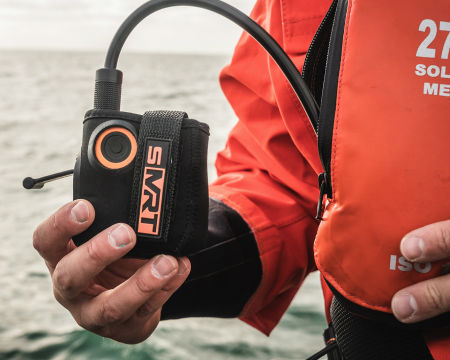What is the difference between a PLB and an EPIRB?.
In this guide, we will briefly summarise what the difference is between a PLB and an EPIRB, despite being similar in design and function, they both provide a potential lifeline to seafarers.
What is a PLB
A personal locator beacon, or PLB for short, is a personal electronic transmitting device that is designed to alert potential rescuers to a life-threatening situation in the air, on water or in remote areas. When activated, the PLB sends out a signal on the official SAR 406MHz frequency.
Find out more about how a PLB work’s via our guide: What is a PLB?
What is an EPIRB
An EPIRB is an Emergency Position Indicating Radio Beacon, which is a device that is used at sea to alert search and rescue services (SAR) in distress or an emergency. Working in a similar way to a PLB, an EPIRB is installed on vessels and registered to a specific boat, rather than a person, via the national search and rescue organisation. In most countries, it is mandatory for all commercial vessels to have an EPIRB registered.
What is the difference between a PLB and an EPIRB?
Despite functioning similarly, there are several differences between how a PLB and an EPIRB work and the situations that you would require one.
Firstly, a PLB is a lot smaller in weight and size than an EPIRB as it is designed to be carried by a single person. Because of this 406MHz only PLBs can be used anywhere in the world at sea or on land, depending on what frequency they operate on, whereas an EPIRB will only be used on water.
Due to its size, the transmission duration of a PLB is a minimum of 24 hours, whereas an EPIRB will transmit for a minimum of 48 hours and will float in the water. As a PLB is a personal piece of equipment, it should ideally be worn on the person or be integrated within the wearer's life jacket.
- What is a Personal Locator Beacon (PLB)?
- How Does a Personal Locator Beacon Work?
- What are the different types of PLBs?
- What are Local Area Systems?
- What is ELIFE?
- What is a True Water Activating PLB?
- What is the difference between a PLB and an EPIRB?
- What Is AIS, VHF and DSC?
- What is a 406 MHz PLB?
Contact Us
Find Us
Marine Rescue Technologies Limited
Wescom Group,
Unit J1, Springfield Way,
Anlaby, HU10 6RJ


